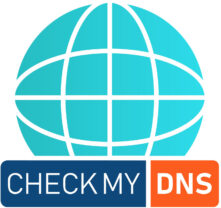Every time you access a website, a complex series of processes happen behind the scenes to translate a human-readable domain name, such as www.example.com, into an IP address readable by a computer. That’s where the DNS, or Domain Name System, comes in. DNS is sure to give you access to websites, but if a domain needs to be resolved anew every time, then the process can take a few milliseconds or more. DNS caching solves this problem by storing frequently accessed domain information, reducing lookup times and making the browsing experience much faster.
Understanding DNS Caching: The Basics
DNS caching refers to the temporary storage of information in DNS lookup on a device or network, making further requests for the same domain to be resolved locally, instead of going through the whole DNS lookup process again. The cache may reside at different levels; from the user’s device up to the local cache, operating system, internet service provider, or even a browser. Each step cuts down the response time by not having to constantly query the authoritative DNS server.
With the very first DNS request to gain access to a domain, the client is redirected by the network of DNS servers to the authoritative server responsible for that domain. After gaining the IP, it will be stored for some period of time, referred to as Time to live in the cache and can be reused for rapid access in subsequent requests. In case of a user trying to locate the same domain with a subsequent request, this request is fulfilled based on the cached response within virtually negligible response time.
Let’s walk through it and see a flow of the process where a user types in a site name into a browser but first requests its IP associated through a DNS query.
Local DNS Cache check-up. If it has such an entry, the request is completed.
- Browser Cache: It searches in the DNS cache of the browser if there is no entry in the local cache.
- OS Cache: If it doesn’t exist in both the local and browser cache, then it looks in the operating system’s cache.
- ISP or Resolver Cache: In case the device caches do not contain the answer, the DNS request is forwarded to the ISP or a DNS resolver where cached DNS records are mostly kept. If the ISP cache contains the IP address, it is returned to the user.
- Authoritative DNS Server: If no caches hold the information, the request is passed through the whole DNS lookup process to retrieve the information from the authoritative DNS server.
Once it has retrieved the IP address, it caches at several levels. This enhances the speed of subsequent requests. The time-to-live defines how long the cache remains valid. This means outdated or wrong data isn’t held in memory forever.
How DNS Caching Improves Speed
DNS caching ensures that performance is optimized with fewer repeated lookups.
- Improved Latency: DNS resolutions can take from a few milliseconds to more than one second, depending on your network and server speed. With DNS caching, that latency is nearly eliminated in repeated queries.
- Lower Server Load: Actually, caching means that the server need not process all of the DNS requests. Thus, the loads on the DNS servers and the network are reduced. This is very valuable for popular sites receiving millions of requests.
- Faster Browser Experience: Direct access to the cached DNS records leads to faster page loading, thereby improving user experience and engagement. This may prove even more apparent to those using slower networks.
- Higher Availability: If the DNS server is temporarily down, the cached data can keep users going to visit websites. This is especially invaluable in the case of network disruptions or DNS crashes.
There are several types of DNS caching that work at different levels of the system to deliver the best possible speed improvements:
- Browser Cache: Browsers cache DNS records of recently visited websites. Each browser has its own caching mechanism and expiration rules, which can be managed through the browser settings.
- Operating System Cache: In addition, DNS is also cached at the OS level. So again, even though different software applications are used other than the browser, DNS remains in the cache for retrieval at the OS level and helps applications that extend across browsers to access the Internet.
- ISP and Recursive DNS Resolver Cache: ISPS and DNS resolvers keep their own cache. This improves lookup time in a network for domains visited very often. It can dramatically reduce lookup time if visited websites are very popular.
- Content delivery network (CDN) caching: some CDNs offer DNS caching as part of their service. This approach allows websites to deliver content faster by reducing DNS lookup times to users accessing content through CDN nodes. How to Manage DNS Caching
DNS caching helps play an important role of serving to facilitate faster browsing along with reduced latency as the DNS records are retained with the frequently used. Providing direct access to the record, DNS caching is seen to help users benefit in a seamless fast experience where loading times on DNS servers are kept at its bare minimum and network traffic will be minimized. This makes sure that proper knowledge and management of DNS caching happen for both the owners and the users for the optimal experience.
